Types of Knots
|
Figure-eight or Flemish bend |
Double fisherman's knot |
Prusik |
|
Klemheist |
Bachmann |
Hedden |
Bowline |
Ring bend or Water knot |
Figure-eight or Flemish bend
The figure eight is the most secure and common way to tie into your harness.
The knot is almost idiot-proof, all you have to do is add an extra twist to
a normal knot then follow the rope back through. The knot is the strongest
if the working end stays on the inside and no strands are crossed. This can
also be tied very easily when making a loop. The figure-eight can be untied
with ease after it has held weight.


Double fisherman's knot
The double fisherman's knot is a strong and useful knot for creating slings
or joining ropes of different diameters. This knot is also called the
Grapewine. the working end of the rope coils around the standing end
forming half of the knot, when the other side is tied in the same manner the
halves are pulled together. Leave an inch or more of tail and pull the knot
tight.
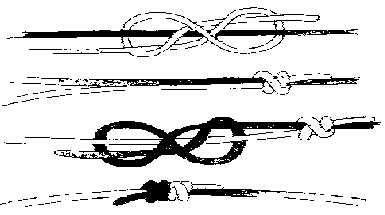

Prusik
The Prusik has many uses since it can perform two functions and it is easy
to do. A sling can be used to create a Prusik knot. The Prusik can be used
as a self belay during a rappel as well as securing a fallen leader. The
Prusik can slide along a rope when loose but tightens when weight is placed
on it. The sling has to be twisted around the main line twice then looped
back through the original loop.


Klemheist
The Klemheist is a variation on the Prusik. The Klemheist is easier to tie
but not to pronounce. The Klemheist also works with a webbing sling.
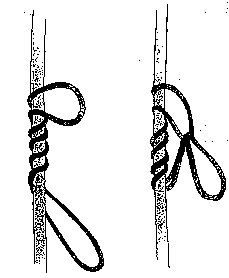
Bachmann
This knot is used in case you actually have to ascend a fixed rope. A
carabiner is attatched to the rope using a sling. The carabiner allows
easier movement of the knot during the ascent. Do not get the strands
twisted when attatching the biner since the sling provides the grip.
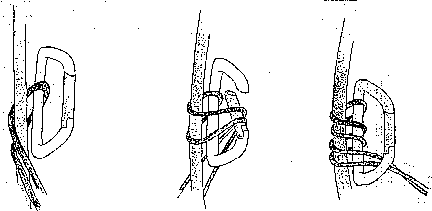
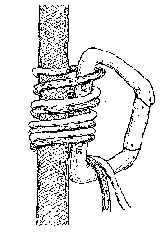
Hedden
The Hedden is a ratchet knot just like the Prusik but used with webbing.
It is quick and easy to tie since it is a variation on the figure-eight
but used like a Prusik.
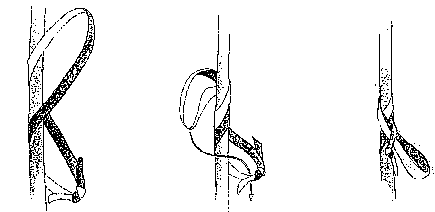

Bowline
This knot looks simple but it is hard to learn and easy to screw up when
tired. The Bowline is a safe tie-in when the free end is tied off. If not,
the line will pull through. The bowline is easy to adjust and can be used
to tie in to multiple anchor points and to equalize the load on each point.
A bowline on a coil can also be used to tie into the rope without a harness.
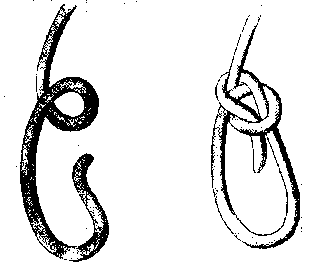
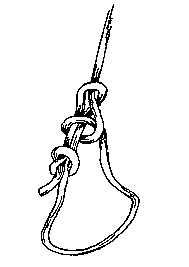
Ring bend or Water knot
This knot is used to make a webbing sling.Do not use this knot to make a
rope sling. Make an overhand knot and follow it back through from the other
side. Leave at least an inch of tail in the ends.

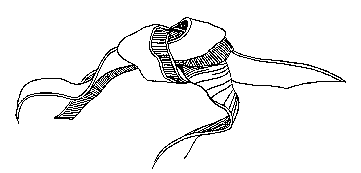
This page hosted by GeoCities. Get your own Free Home Page
















